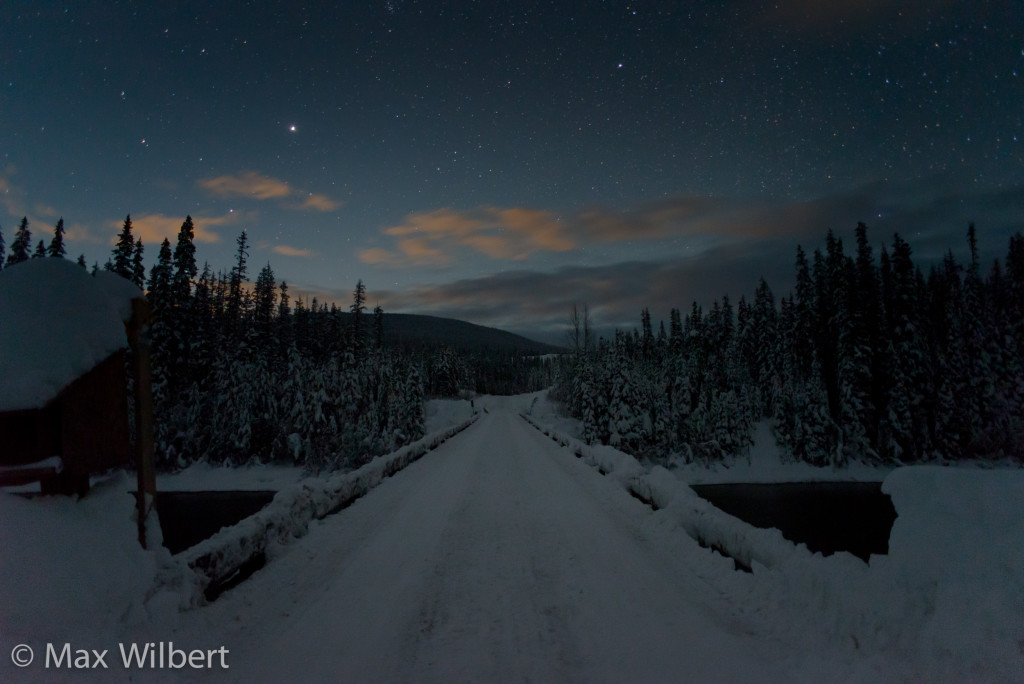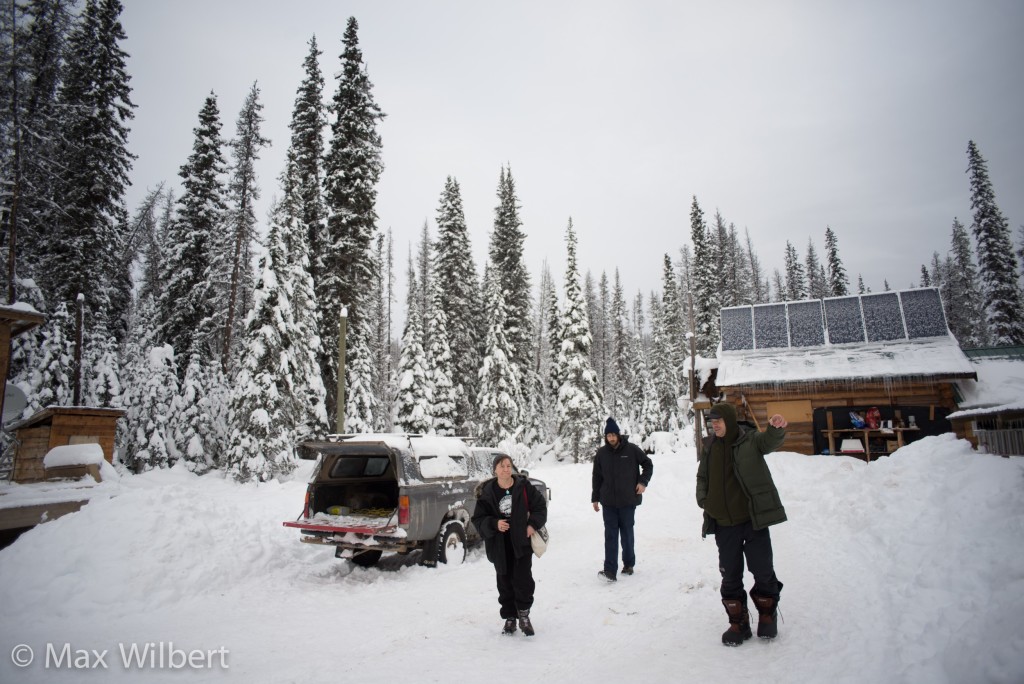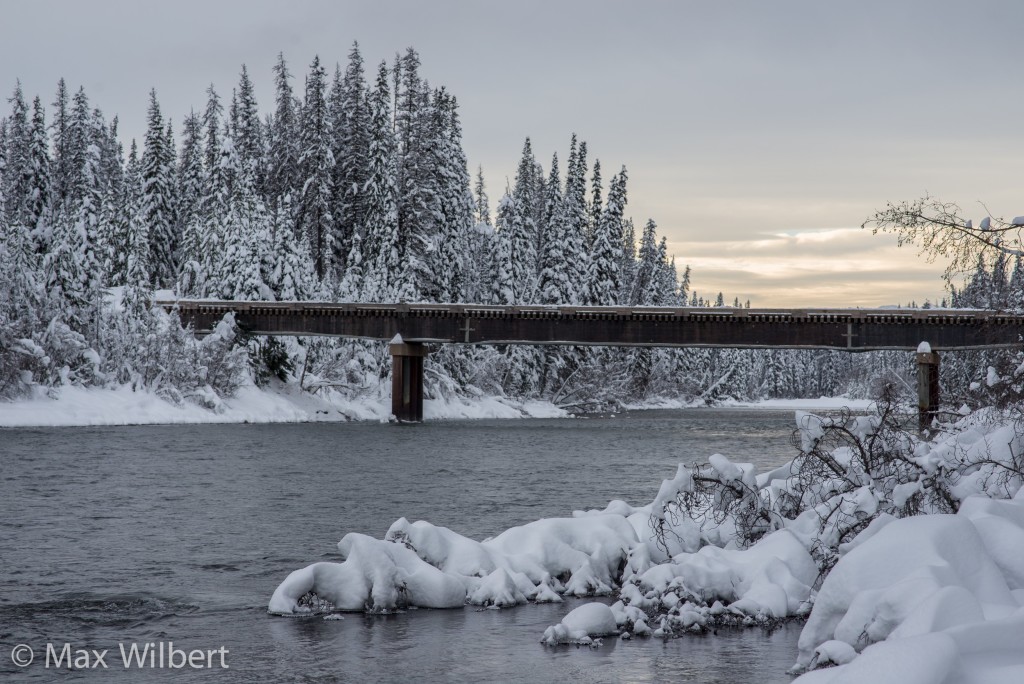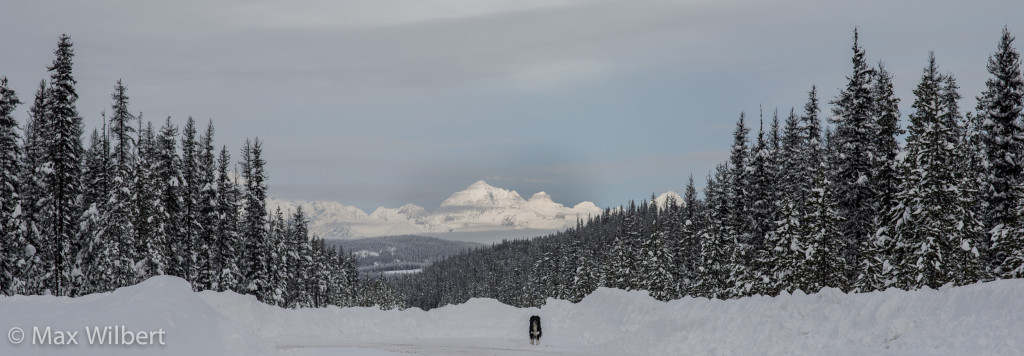Unist’ot’en Camp, January 2015
The storm enveloped us.
Snow lashed the road. The darkness was total, our headlights casting weak yellow beams into the darkness. Most people had hunkered down in homes and motels, and the roads were near empty. Still, every few minutes a passing truck threw a blinding cloud of dry snow into the air, leaving us blind for seconds at a time as we hurtled onwards at the fastest speeds we could manage.
We pressed on, for our destination was important. It was a caravan to the Unist’ot’en Camp, and we were committed.
Let me explain. The Unist’ot’en Camp is an indigenous resistance community led by the eponymous clan of the Wet’suwet’en First Nation. Since 2009, Freda Huson and Dini Ze Toghestiy, under the advisement of their elders, have built a permanent camp directly on the GPS coordinates of a series of proposed fracked-gas and tar sands oil pipelines.
Eleven companies in all, including Apache, Enbridge, Exxon and Kinder Morgan, plan to put pipelines through Unist’ot’en territory without consultation with or approval of the traditional leadership. The pipelines would carry fracked gas from the Liard and Horn River Basins in northeastern BC and bitumen from the Alberta tar sands westward to export terminals being built in the town of Kitimat. Other pipelines would carry highly corrosive and toxic condensate — used for diluting tar sands — eastward to processing facilities in Alberta.
Critics worry that increased supertanker traffic near Kitimat could lead to a catastrophic spill that could make the Exxon Valdez disaster pale in comparison.
Further inland, the pipelines would cross more than 200 rivers and streams that provide habitat for salmon and other life of the region. Already, the pipeline companies are surveying and clearcutting hundreds of acres of forests along the route. The Unist’ot’en have firmly but peacefully evicted pipeline company workers on numerous occasions, threatening to confiscate their equipment and asserting their title to their ancestral lands.
It’s a beautiful model. The Unist’ot’en are not only preventing harm to their traditional lands and upholding their duty to pass on the bounty of the natural world to future generations, they are also revitalizing their cultural ways and educating hundreds of visitors — both indigenous and non- — on the importance of decolonizing and connecting to the land.
At the Unist’ot’en Camp, decolonization is a living process, something that is thriving as resistance-minded people from across the world visit the camp to share their knowledge, resources, and sweat in the service of the cause.
Our cars barreled north in the teeth of storms that almost kept us away. Freezing rain dogged us through the lower Fraser River Valley as we paralleled the northern edge of Whatcom County, and we turned north at Hope and began to climb into the steepest sections of the canyon as snow set in. Spindrift avalanches swept down the rock faces, but we pressed on.
We drove another full day through heavy snow and icy roads before reaching Houston, B.C., the nearest town to the camp. After a night in a motel, we tackled the final stretch of the drive: 66 kilometers of logging roads that are only occasionally plowed. After only one abrupt meeting between snowbank and vehicle, we reached the camp, tired but exhilarated.
There was one final boundary. At 66km on the Morice River Road, a bridge lies over the Wedzin Kwah (colonial name Morice River), a swift and broad river carrying water from vast forests and mountains. This is the boundary of this section of Unist’ot’en territory, and one does not simply cross this line. It is a national border and must be approached carefully. A sign, and sometimes a chain, blocks the road across the bridge. Instructions direct visitors to honk their horns and wait.
We honked and waited.
Fifteen minutes later, a lone woman appeared on the far side of the bridge and walked to the center. Her name is Freda Huson, and in December she was named by Al-Jazeera as the number two activist hero in the world. Her worth doesn’t hinge on media accolades, of course, but in this case it’s well deserved. Freda is a warrior possessed of a keen mind, a commitment to action and an abundance of wisdom.
She beckoned us forward, and our contingent of 10 formed a semicircle around her. She questioned each of us in about our names, our origins, our intentions and how we meant to help her people.
Entrance to Unist’ot’en territory is not guaranteed. This protocol is serious.
But we were there in good faith, with carloads of supplies and envelopes full of donations, and we were expected. Many of us had been here before, and Freda finally smiled, shared hugs with friends and handshakes with new visitors. We entered the territory.
The next seven days were a whirlwind of activity punctuated with brief periods of rest. We spent hours shoveling the heavy snowfall from the storms, clearing walkways and rooftops. The bridge must be cleared of ice lest it accumulate and threaten to slide crossing vehicles into the river. Meals must be cooked, dishes washed, and buildings cleaned.
For a week, we split wood, organized the toolshed, hauled water, fixed trucks and snowmobiles and more. We walked the trapline which has been established in the path of yet another pipeline as a means of establishing title. We stood on the bridge and watched as first two immature eagles, then another who is fully grown — perhaps a parent — wheel over the Wedzin Kwah.
The end of each day found us all around the table, sharing a prayer of thanks before tucking into healthy portions of delicious food. The land supplies some of it, including mountain goat, moose, beaver and salmon. Our bellies rejoice and the cabin echoes with laughter and warmth. Freda said it’s important that love be put into each meal, since bad feelings linger in the food and are passed on to all who eat. There was no shortage these nights.
After dinner, some slipped away to an early bedtime in the bunkhouse with the big wood stove, while others lingered in the cabin to share stories and laughter around a game late into the night. With each passing day, our hearts softened and our resolve to defend the land hardened.
If there is one thing I have learned from the Unist’ot’en, it is this: resistance is what we need. It’s what we need to protect Earth, and it’s what we need as human beings. In consumeristic, individual mass culture, we are all adrift, beset by a nightmarish system intent on commercializing and exploiting everything: the trees, the rivers, the soil, the plants, the human body, our thoughts, even the atom itself. There are no bounds to what this system will destroy, and as it destroys the natural world it destroys our communities and internal selves.
Resistance is the antipode to the dominant culture, and the Unist’ot’en Camp illustrates two interlocking and fundamental truths. First, the system which is killing the planet and exploiting billions can and must be stopped. Second, resistance is our best chance of reclaiming the best traits our species can display: compassion, love, fierce loyalty, deep connection to the land, community and shared purpose.
The week drew to a close, and we prepared to make our goodbyes. We were sore, tired and dirty, but our souls were full. We’d packed the cars, attached the tire chains, scraped the windows and made a final sweep of the bunkhouse in an effort to be good guests.
We gathered in a circle to say our goodbyes. It was a cold, clear morning, and the snow hung heavy on the trees. Small birds fluttered overhead, and a squirrel chittered at us from the side of the house. The camp dogs whimpered unhappily in anticipation of the break up of their newest pack.
“Love has to be the basis of our resistance,” Toghestiy says to us all. “People come here to throw down, ready to fight the pipeline companies. And it might come to that. If it does we will be ready. We won’t stand down from a fight. But that’s not what we’re about. Everyone who comes up here, the most important thing we try to teach them is to fall in love with the land. If you’re in love with a place, you’ll defend it.”
As we drove away, I felt a bit crestfallen. I was looking forward to seeing friends and family again and to rejoining the political struggles I organize around. But a piece of my heart will remain there, embedded in these forests and rivers and mountains. I’ve fallen for this land, and it’s under threat. The RCMP could move in at any time to threaten the camp, and to do as they have always done: protect business and profit from the people who fight for life. Those who choose to resist run these risks.
So I’ll be back, as soon as I can. In the meantime, I’ll be spreading the lessons of the Unist’ot’en, working to raise funds and supplies for the camp, and participating in other struggles. In May, a starkly different landscape in Eastern Nevada will teach similar lessons, as I help bring visitors there to fall in love and defend that place from the rapacious thirsts of a growing Las Vegas looking for new water supplies.
But for now, I’m lost in thought, thinking about my love, and when I will return.
—
Max Wilbert lives in the Pacific Northwest, where he works to support indigenous resistance to industrial extraction projects, anti-racist initiatives, and radical feminist struggles as part of Deep Green Resistance Seattle. He makes his living as a writer and photographer, and can be contacted at max@maxwilbert.org.
Learn more about the Unist’ot’en Camp on their Facebook page. You can apply to be a volunteer at the camp through VICFAN. Follow Deep Green Resistance Seattle for news and local events to support the camp. This article was originally published in the Whatcom Watch.








Pingback: Falling in Love (Unist'ot'en Camp Report-Back) - Deep Green Resistance Great Basin
Pingback: Unist'ot'en Camp report-back: Falling in Love - Deep Green Resistance Blog